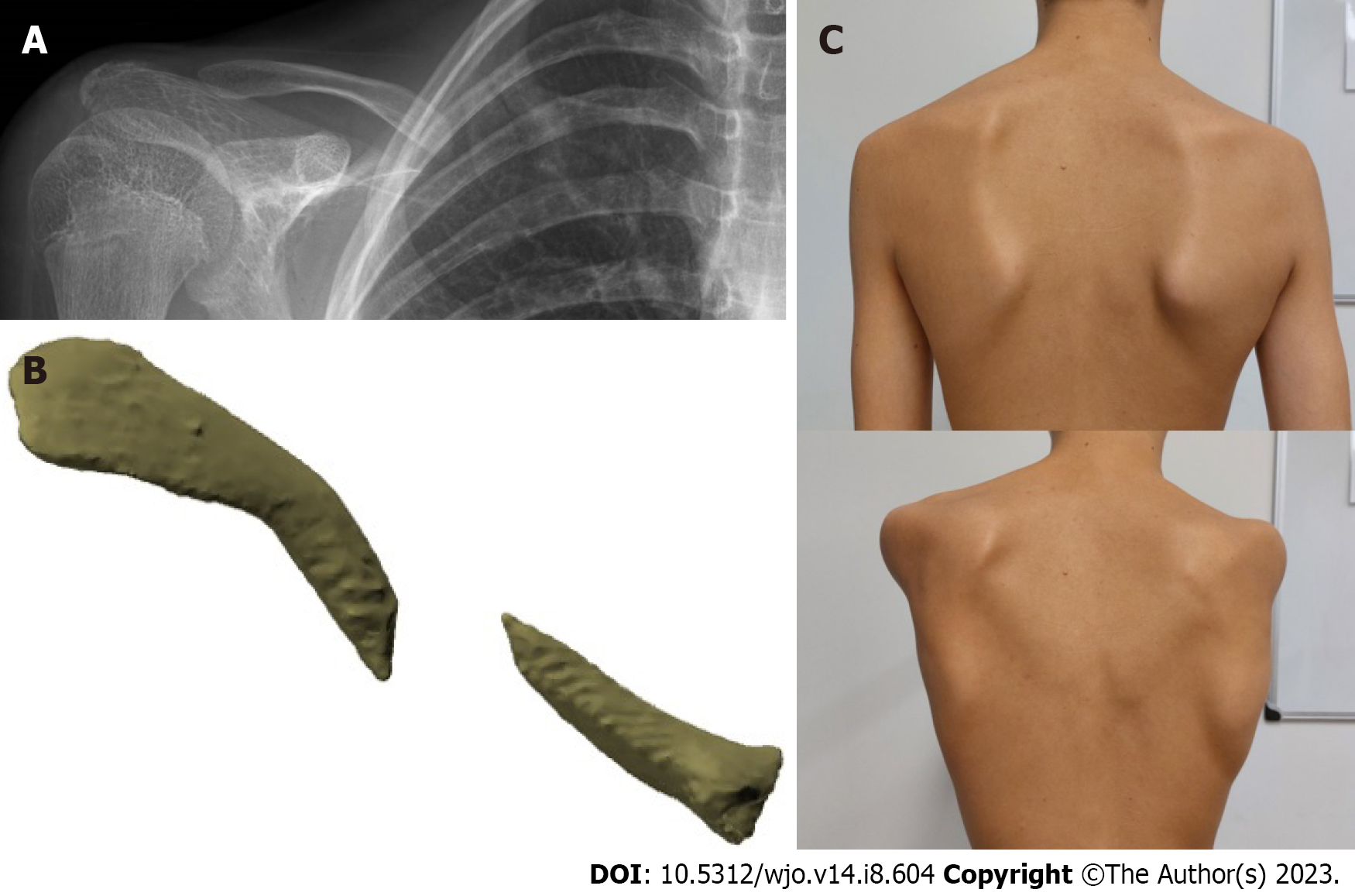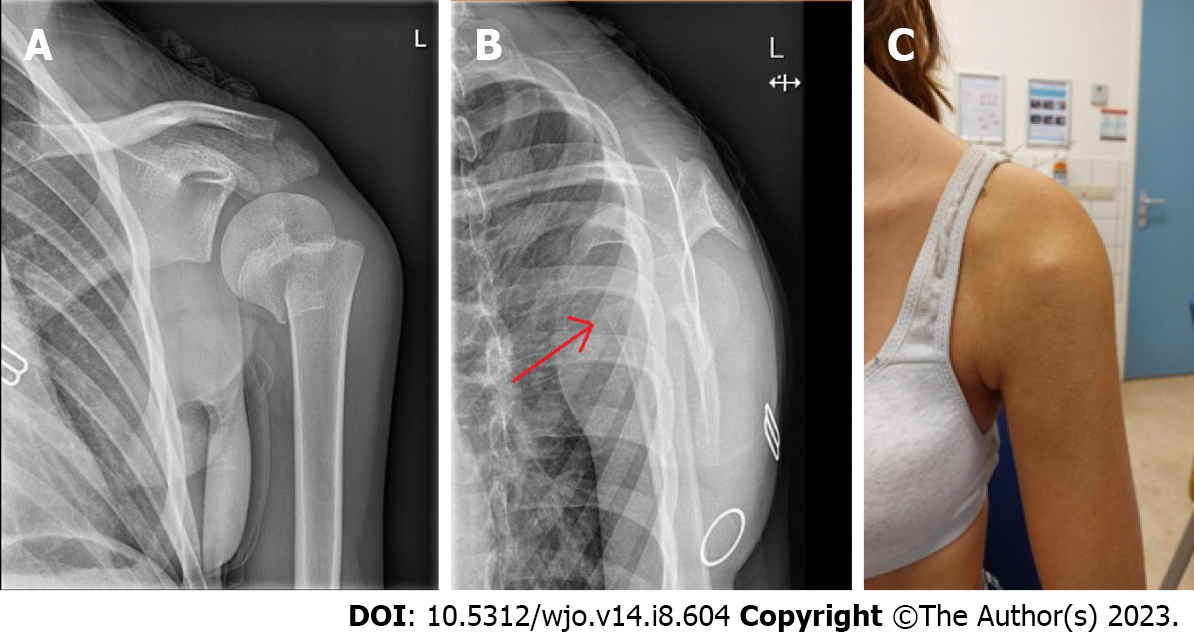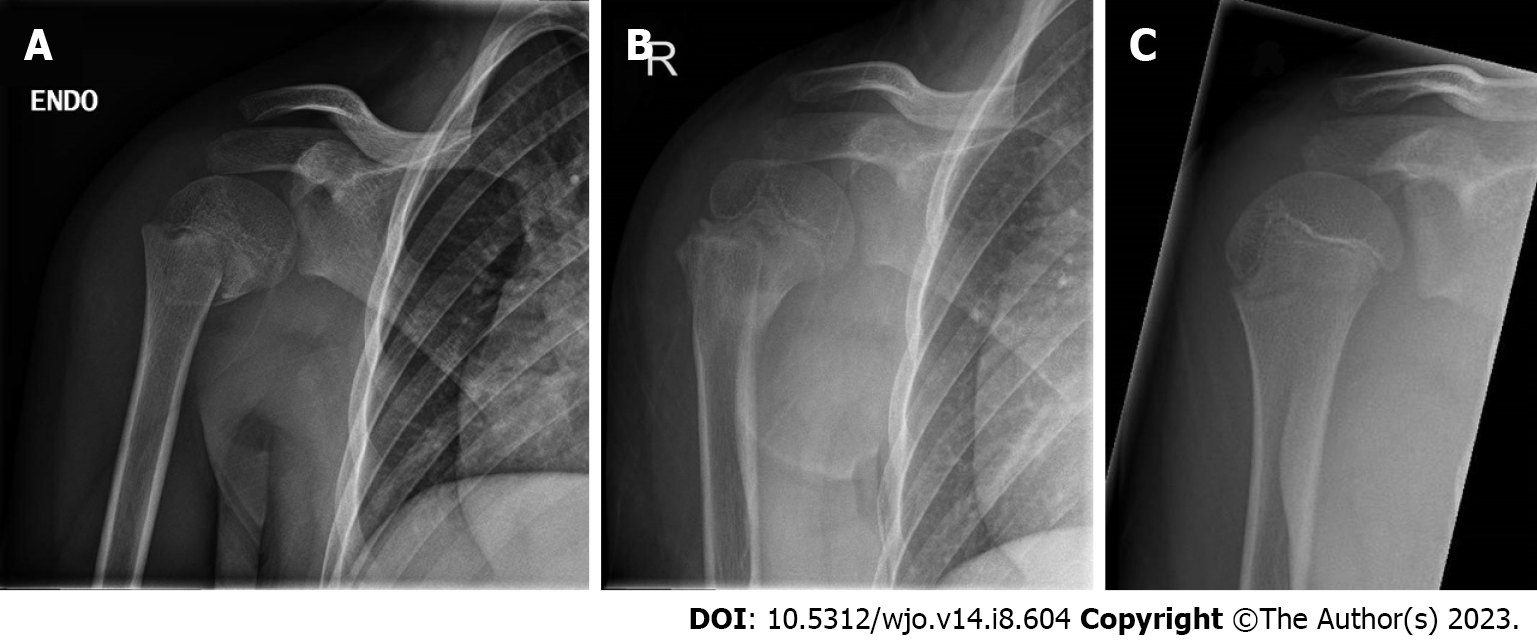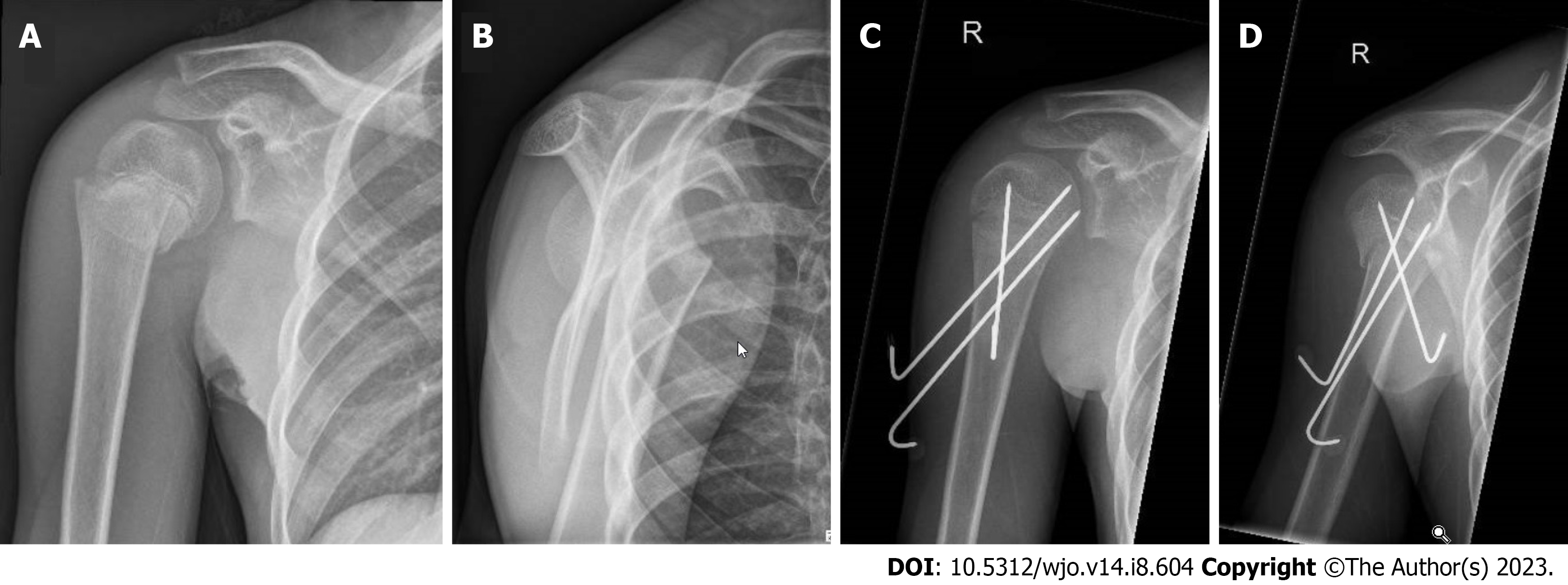Copyright
©The Author(s) 2023.
World J Orthop. Aug 18, 2023; 14(8): 604-611
Published online Aug 18, 2023. doi: 10.5312/wjo.v14.i8.604
Published online Aug 18, 2023. doi: 10.5312/wjo.v14.i8.604
Figure 1 A rare case of a 15-year-old boy with scapular dyskinesia caused by shortening of his clavicle due to a nonunion.
A: Anteroposterior radiograph showing the clavicle nonunion; B: Three dimensional computed tomography reconstruction of the same clavicle nonunion; C: Scapular dyskinesia (right sided) caused by shortening of the clavicle due to nonunion.
Figure 2 Schematic drawing of the physis of the proximal humerus during growth.
A: 1 mo; B: 5 years; C: 9 years; D: 11 years; E: 15 years of age.
Figure 3 Case example of a 14-year-old girl.
A: Anteroposterior; B: Transscapular radiograph showing an ‘apex anterior’ displacement of a proximal humerus fracture (arrow); C: Clinical photograph showing the apex anterior displacement visibly beneath the skin.
Figure 4 Remodeling of a proximal humerus fracture in an 8-year-old boy.
A: Anteroposterior radiographs taken at the initial trauma; B: After 3 mo; C: After 8 mo.
Figure 5 An example of a Neer type II displaced proximal humerus fracture in a 12-year-old boy.
A: Anteroposterior; B: Transscapular radiographs taken after the trauma; C and D: After closed reduction and percutaneous K-wire fixation.
- Citation: Kraal T, Struijs PA, Langenberg LC, van Bergen CJA. Fractures around the shoulder in the skeletally immature: A scoping review. World J Orthop 2023; 14(8): 604-611
- URL: https://www.wjgnet.com/2218-5836/full/v14/i8/604.htm
- DOI: https://dx.doi.org/10.5312/wjo.v14.i8.604













